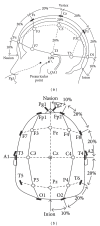Role of EEG as biomarker in the early detection and classification of dementia
- PMID: 25093211
- PMCID: PMC4100295
- DOI: 10.1155/2014/906038
Role of EEG as biomarker in the early detection and classification of dementia
Abstract
The early detection and classification of dementia are important clinical support tasks for medical practitioners in customizing patient treatment programs to better manage the development and progression of these diseases. Efforts are being made to diagnose these neurodegenerative disorders in the early stages. Indeed, early diagnosis helps patients to obtain the maximum treatment benefit before significant mental decline occurs. The use of electroencephalogram as a tool for the detection of changes in brain activities and clinical diagnosis is becoming increasingly popular for its capabilities in quantifying changes in brain degeneration in dementia. This paper reviews the role of electroencephalogram as a biomarker based on signal processing to detect dementia in early stages and classify its severity. The review starts with a discussion of dementia types and cognitive spectrum followed by the presentation of the effective preprocessing denoising to eliminate possible artifacts. It continues with a description of feature extraction by using linear and nonlinear techniques, and it ends with a brief explanation of vast variety of separation techniques to classify EEG signals. This paper also provides an idea from the most popular studies that may help in diagnosing dementia in early stages and classifying through electroencephalogram signal processing and analysis.
Figures












References
-
- Pond D. Dementia an update on management. Australian Family Physician. 2012;41(12):936–939. - PubMed
-
- Cedazo-Minguez A, Winblad B. Biomarkers for Alzheimer's disease and other forms of dementia: clinical needs, limitations and future aspects. Experimental Gerontology. 2010;45(1):5–14. - PubMed
-
- Hampel H, Frank R, Broich K, et al. Biomarkers for alzheimer's disease: academic, industry and regulatory perspectives. Nature Reviews Drug Discovery. 2010;9(7):560–574. - PubMed
-
- Jeong J. EEG dynamics in patients with Alzheimer's disease. Clinical Neurophysiology. 2004;115(7):1490–1505. - PubMed
-
- John ER, Prichep LS, Fridman J, Easton P. Neurometrics: computer-assisted differential diagnosis of brain dysfunctions. Science. 1988;239(4836):162–169. - PubMed
Publication types
MeSH terms
LinkOut - more resources
Full Text Sources
Other Literature Sources
Medical

